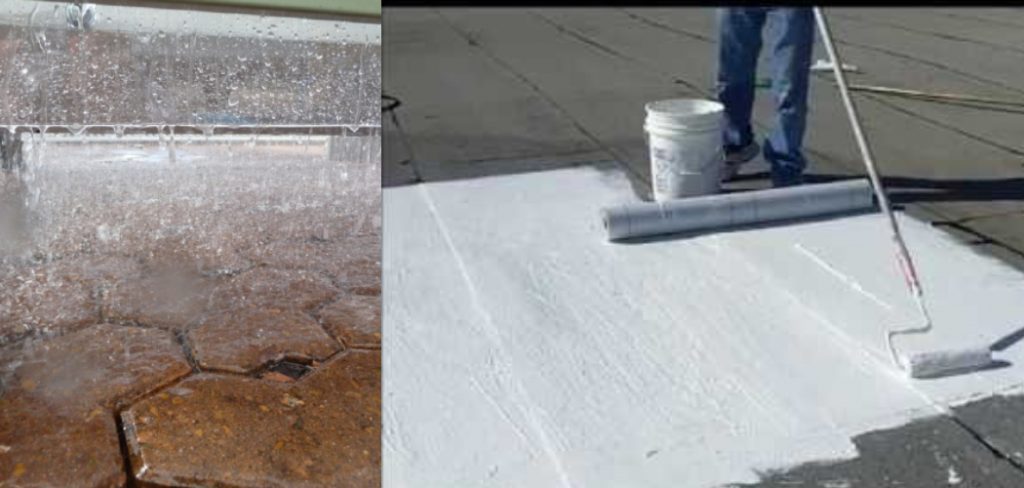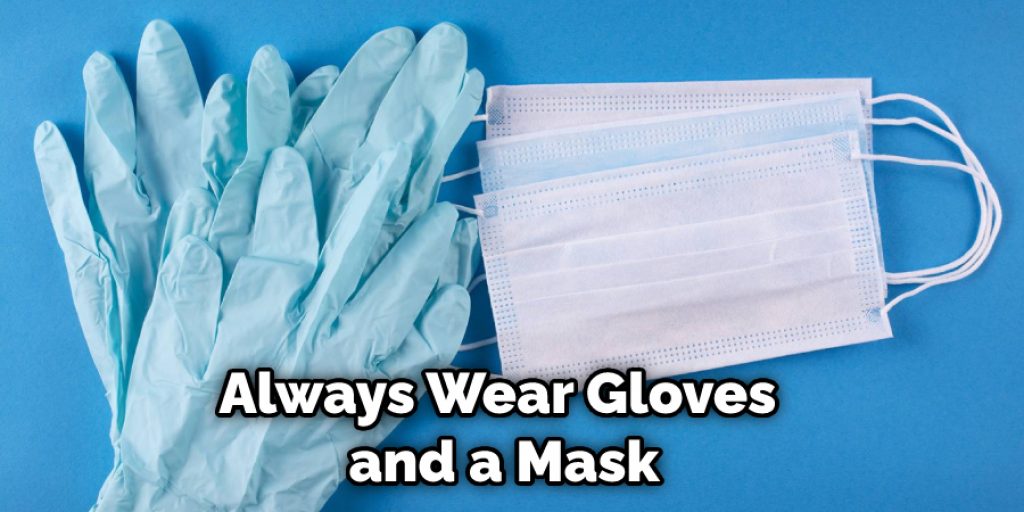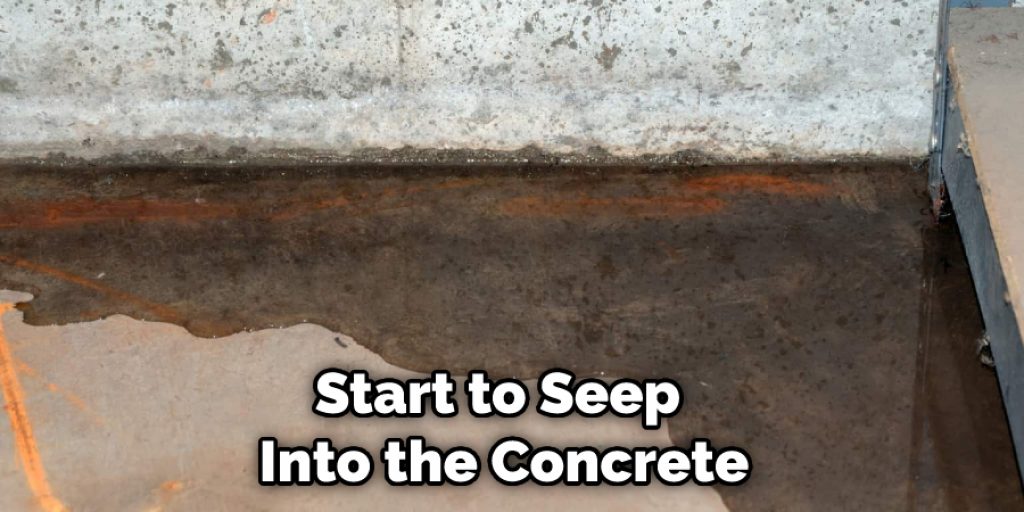If you’ve ever experienced water ponding on your concrete driveway or patio, you know it can be frustrating. The water looks unsightly, but it can also damage the concrete over time. In this blog post, we’ll show you how to fix water ponding on concrete so that you can enjoy a dry surface year-round. Keep reading for tips and tricks!
Summary: If you find water ponding on your concrete steps, don’t worry – you can fix the problem with these simple steps. First, identify the source of the ponding so it can be addressed.
Next, clean up the area by removing any dirt and debris before applying a sealer. Depending on how severe the issue is, you may need to grind or replace the concrete. If needed, hire a concrete raising and leveling professional to ensure optimal results. Finally, enjoy your newly restored stairs!

What Is Water Ponding
Water ponding is a condition where water sits on top of your lawn instead of sinking in and being absorbed. This can happen for various reasons, including compacted soil, poor drainage, or even just heavy rain. If left untreated, water ponding can damage your lawn by preventing the roots from getting the oxygen they need.
Water ponding on your lawn can lead to fungal growth and mosquito breeding. However, you can take some simple steps to fix the problem. For example, aerating your lawn will help to improve drainage, and adding organic matter will help break up compacted soil. By taking these measures, you can help to ensure that your lawn stays healthy and free of water ponding.
Why Should You Fix Water Ponding on Concrete
Water ponding on concrete can cause several problems. First, it can lead to the growth of mold and mildew, which can damage the concrete and create an unsightly appearance. Additionally, ponding water can freeze in cold weather, causing the concrete to crack and crumble. Finally, water that ponding on concrete can eventually seep through cracks and holes, causing serious water damage to the surrounding area.
Finally, standing water is a breeding ground for mosquitoes and other pests. Therefore, it is important to fix any water ponding problems as soon as possible. There are several ways to address ponding water, such as installing drains or slopes, but the most effective solution is often to repair cracks or holes in the concrete.
How to Fix Water Ponding on Concrete Step by Step Guide
Step 1: Identify the Affected Areas
The first step in fixing water ponding on concrete is to identify the areas where water is accumulating. Walk around the concrete surface during or shortly after a rainstorm to observe the extent of the problem. Use chalk or a similar temporary marking material to outline the affected areas. This will help you understand the severity and extent of the issue, allowing you to choose the most appropriate solution.
Step 2: Evaluate the Slope of the Concrete Surface
Examine the slope of the concrete surface to determine whether it directs water away from the affected areas or towards them. A well-graded concrete surface should have a slope of at least 1/8 inch per foot, which allows water to flow away from buildings and other structures. If the slope is inadequate, it may be necessary to regrade the concrete surface or install drainage systems to alleviate the problem.
Step 3: Clean the Concrete Surface
Thoroughly clean the concrete surface to remove any dirt, debris, or other materials that may be contributing to the ponding issue. Use a broom, power washer, or leaf blower to remove any loose materials from the surface. Additionally, remove any buildup of algae or moss, as these can exacerbate ponding problems by retaining moisture on the surface.
Step 4: Repair Cracks and Joints
Cracks and joints in the concrete surface can exacerbate water ponding issues by allowing water to penetrate and accumulate beneath the surface. Inspect the entire surface for cracks and joints, and repair any that are found. Use a concrete crack filler or a flexible joint sealant to repair the damage, following the manufacturer’s instructions for proper application.
Step 5: Choose a Suitable Repair Method
Depending on the severity of the ponding issue and the condition of the concrete surface, different repair methods may be appropriate. Consider the following options:
- Resurfacing: If the concrete surface is in good condition but has an inadequate slope, it may be possible to apply a thin layer of new concrete or a concrete resurfacer to adjust the slope and eliminate ponding.
- Concrete grinding: If the ponding issue is relatively minor, concrete grinding can be used to level out high spots on the surface, promoting proper drainage.
- Drain installation: In some cases, it may be necessary to install drains or channels to direct water away from the ponding areas.
- Mudjacking or polyurethane foam injection: If the ponding issue is due to settlement of the concrete slab, mudjacking or polyurethane foam injection can be used to raise and level the slab, promoting proper drainage.
Step 6: Prepare the Concrete Surface
Before applying any repair materials, prepare the concrete surface by following the manufacturer’s recommendations for the chosen repair method. This may include:
- Roughening the surface: Many repair materials require a roughened surface to promote adhesion. Use a concrete grinder, shot blaster, or scarifier to roughen the surface, if necessary.
- Applying a bonding agent: For resurfacing applications, a bonding agent may be required to ensure a strong bond between the existing concrete and the new material. Follow the manufacturer’s recommendations for the proper application of the bonding agent.
Step 7: Apply the Chosen Repair Method
Following the manufacturer’s recommendations, apply the chosen repair method to the affected areas. Some general guidelines for each method include:
- Resurfacing: Mix the concrete resurfacer according to the manufacturer’s instructions and apply it to the surface using a trowel or squeegee, ensuring a consistent thickness and maintaining the desired slope.
- Concrete grinding: Use a concrete grinder with the appropriate grinding disc to level high spots on the surface. Work in a consistent pattern, overlapping each pass by approximately one-half the width of the grinding disc.
- Drain installation: Excavate a trench in the desired location, ensuring that it slopes away from the ponding area. Install the drainpipe or channel drain, backfill the trench with gravel, and cover it with a permeable fabric to prevent debris from entering the drain.
- Mudjacking or polyurethane foam injection: Drill small holes in the concrete surface at the appropriate intervals, following the manufacturer’s recommendations. Inject the mudjacking material or polyurethane foam through the holes, gradually raising the slab until it is level and the ponding issue is resolved. Patch the drilled holes with a concrete repair material.
Step 8: Allow the Repair Material to Cure
Allow the repair material to cure according to the manufacturer’s recommendations. During this time, avoid walking or driving on the surface, and keep the area free from debris, water, and other materials that could compromise the repair.
Step 9: Apply a Protective Coating (Optional)
Once the repair material has fully cured, consider applying a protective coating to the concrete surface. A sealer or other protective coating can help to prevent future ponding issues by preventing water from penetrating the surface and making it easier for water to flow off the surface. Follow the manufacturer’s recommendations for the proper application of the protective coating.
Step 10: Monitor and Maintain the Repaired Surface
After completing the repair, monitor the area during and after rainstorms to ensure that the ponding issue has been resolved. Continue to maintain the concrete surface by keeping it clean and free from debris, repairing any cracks or damage as needed, and reapplying protective coatings as necessary. Regular maintenance will help to extend the life of the repaired surface and minimize the risk of future ponding issues.
Some Other Things You Should Keep in Mind
- If you have a pond that is constantly overflowing, it is probably best to talk to a professional about how to fix the problem.
- Ponds can be created by anything from melting snow to rainwater runoff. If your pond is man-made, you may be able to improve drainage by creating an outlet or spillway.
- You can also try to increase the capacity of your pond by adding more liners or excavating the sides.
- If you have a natural pond, you may be able to improve drainage by clearing debris and vegetation from the area around the pond.
- Leaking pipes or gutters can also cause ponding. If you suspect this is the case, you should have a professional check for leaks.
- You may also want to consider installing a French drain or another drainage system around your pond to help collect and redirect water.
Some Safety Precautions
Before starting any repair work, it’s important to take safety precautions. First, always wear gloves and a mask when working with concrete. Second, be sure to work in a well-ventilated area. Third, use caution when working around power tools and other equipment.

Finally, ensure you have all the necessary supplies and tools before beginning your project. If you want to know more about how to fix water ponding on concrete, keep reading.
How Do I Stop Water Ponding on Concrete
Most people have had the experience of water pooling on concrete and not figuring out how to stop it. Water ponding can be frustrating, whether from rain, melting snow, or a sprinkler system. Thankfully, there are a few steps you can take to fix the problem.
First, check to see if the concrete is level. If it’s not, water will naturally collect in low spots. Second, make sure that your gutters and downspouts are clean and debris-free. This will allow water to flow freely away from your foundation.
Finally, consider installing a drain or French drain around the perimeter of your concrete pad. This will provide an outlet for any water that does the pond, preventing it from causing damage to your concrete or home.
If you follow these steps, you should be able to stop water ponding on your concrete pad.
How Do You Fix a Low Spot on A Concrete Slab
If you have a concrete slab that is starting to show signs of wear, it is important to take action immediately. One problem is a low spot forming in the middle of the slab. While this may not seem like a big deal at first, it can eventually lead to cracks and further damage. So how do you fix a low spot on a concrete slab?
The best way is to use a process called mud jacking. Mudjacking involves pumping a slurry of concrete and other materials under the slab, which raises it back into place.
This is an effective way to repair existing damage, but it can also help prevent future problems from occurring. So if you have a concrete slab that is in need of repair, contact a mud jacking contractor today.
Frequently Asked Question
What Happens if Water Stays on Concrete?
If water stays on your concrete for more than a few minutes, it can cause problems. The water will start to seep into the concrete, leading to cracking and other damage. Additionally, standing water can attract insects and other pests, further damaging your concrete.

Can Pooling Water Damage Concrete?
Yes, pooling water can damage concrete. When water pools on concrete, it can cause the surface to become weak and flaky. If left unchecked, this can lead to cracks and structural damage. Water ponding can also lead to mold and mildew, which can cause health problems if inhaled.
Can Water Damage Cement?
One of the most common questions we get asked is whether or not cement can be damaged by water. Unfortunately, the answer is yes, it can. However, it’s important to remember that cement is a very durable material and, when properly cared for, it can last for many years without any problems.
Is There a Sealer for Concrete?
One of the best ways to prevent water ponding on concrete is to apply a sealer. This will help create a barrier between the concrete and any moisture that may come in contact with it. There are many different types of sealers available on the market, so be sure to choose one specifically designed for use on concrete.
What Will Ruin Concrete?
Water ponding is one of the most common causes of concrete damage. When water sits on top of the concrete, it will eventually soak through and cause the concrete to crack and crumble. Unfortunately, this can also lead to harmful mold and mildew growth.
You Can Check It Out To Fix a Loose Concrete Anchor
Concluding
If you have a water ponding problem on your concrete, don’t fret! There are several ways to fix it. We’ve outlined the three most common methods below. Which method will work best for your situation? Thanks for reading our post about how to fix water ponding on concrete.
